Ampol Bundle
How did Ampol Fuel Australia's Rise?
Ever wondered how a local Australian oil company defied global giants to become a national icon? Ampol's story is one of resilience, innovation, and unwavering commitment to the Australian people. From its Ampol SWOT Analysis to its strategic expansions, the company's journey is a fascinating case study in business evolution.
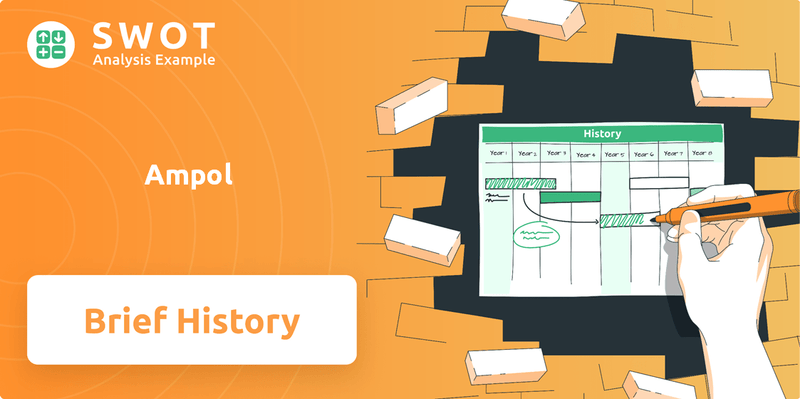
The Ampol history is a testament to the power of vision and adaptability. Understanding the Ampol company's origins provides valuable insights into the dynamics of the Australian fuel industry. Explore the Ampol Australia timeline to learn about its early days and how it became a major player in the Australian economy.
What is the Ampol Founding Story?
The Ampol company has a rich history rooted in the pursuit of Australian independence in the fuel market. Its founding story is a testament to the vision of a group of Australian businessmen who sought to challenge the dominance of foreign oil companies.
Established on March 23, 1936, as the Australian Motorists Petrol Company, Ampol's creation was a direct response to the need for a domestic alternative. The company's early years were marked by strategic choices and a clear understanding of the market.
The initial business model focused on importing refined petroleum products and distributing them through a network of service stations. The first product offered was petrol, marketed under the Ampol brand. The name 'Ampol' was a clever contraction of 'Australian Motorists Petrol Company,' perfectly reflecting its national identity and target market.
Ampol's early success was driven by its commitment to being an Australian-owned fuel company. This resonated with the public and helped it gain a foothold in the market.
- Ampol was founded on March 23, 1936, as the Australian Motorists Petrol Company.
- The company's founders aimed to create an independent, Australian-owned fuel company.
- The initial focus was on importing and distributing refined petroleum products.
- The name 'Ampol' was derived from 'Australian Motorists Petrol Company'.
The economic climate of the inter-war period significantly shaped Ampol's establishment. National self-sufficiency and the development of local industries were gaining prominence, which fueled Ampol's early growth. Initial funding was secured through a public share offering, indicating early public support for an Australian-owned fuel company. This initial funding was crucial in allowing Ampol to establish its presence and begin its journey in the Australian fuel industry.
Ampol SWOT Analysis
- Complete SWOT Breakdown
- Fully Customizable
- Editable in Excel & Word
- Professional Formatting
- Investor-Ready Format
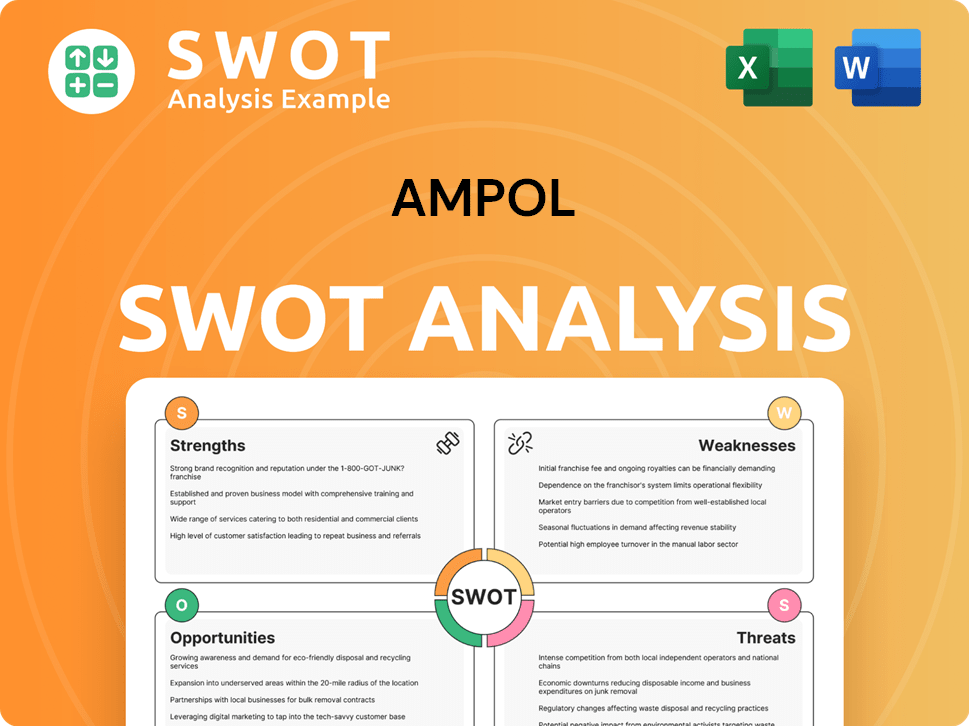
What Drove the Early Growth of Ampol?
The early growth of the Ampol company, an Australian oil company, was characterized by strategic expansion and securing fuel supplies. From its establishment in 1936, Ampol Australia quickly expanded its presence across the country. Initial product offerings included various petrol grades and lubricants, setting the stage for significant milestones.
A pivotal moment was the 1950 acquisition of Neptune Oil Company, significantly boosting Ampol's retail network and market share. This move allowed Ampol to strengthen its position in the competitive fuel market. The company focused on broadening its distribution network, ensuring fuel availability across Australia.
In the 1950s, Ampol made a strategic shift into refining with the construction of the Kurnell Refinery in Sydney, operational from 1956. This transformed Ampol from a distributor into an integrated oil company. Vertical integration enabled greater control over the supply chain and reduced reliance on imported refined products.
The company expanded its commercial fuel supply operations, catering to industries like mining and agriculture. Leadership transitions during this period saw the company navigating intense competition. Ampol's growth was well-received, allowing it to gain a significant niche against established international players. For more insights, see the Marketing Strategy of Ampol.
Ampol's early success was driven by its ability to secure reliable fuel supplies and expand its distribution network. The company's strategic moves, including acquisitions and refinery construction, were crucial. These actions helped Ampol establish itself as a major player in the Australian fuel industry, competing with larger international firms.
Ampol PESTLE Analysis
- Covers All 6 PESTLE Categories
- No Research Needed – Save Hours of Work
- Built by Experts, Trusted by Consultants
- Instant Download, Ready to Use
- 100% Editable, Fully Customizable
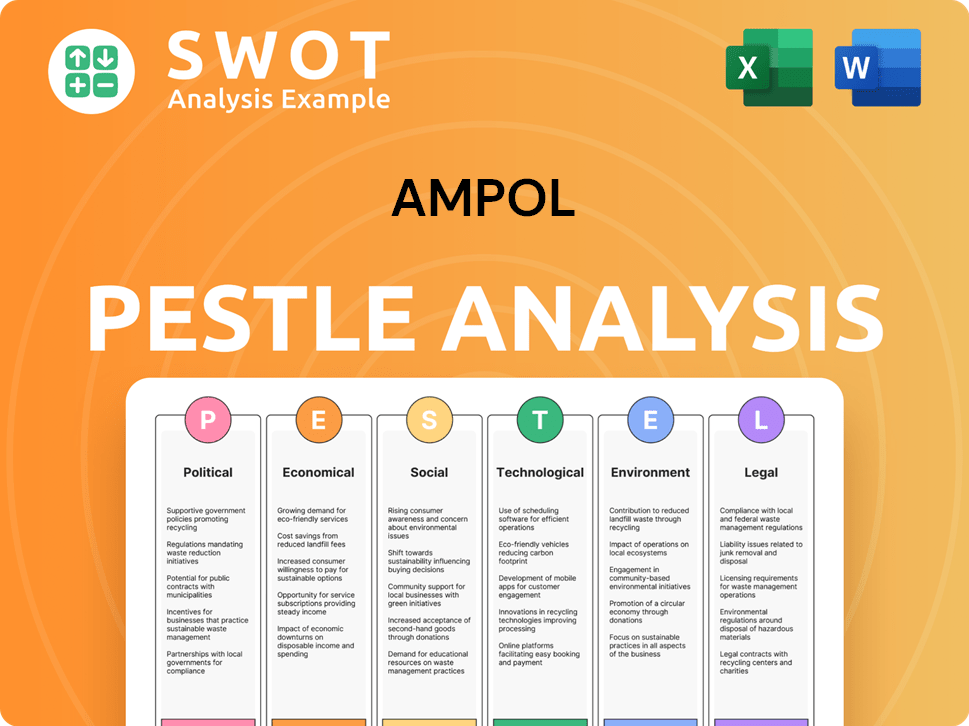
What are the key Milestones in Ampol history?
The Ampol company has a rich Ampol history marked by significant milestones that have shaped its trajectory as a leading Australian oil company. From its Ampol origins to its current standing, the company has demonstrated resilience and adaptability in a dynamic market. The Ampol timeline is filled with strategic moves and pivotal moments that have contributed to its success.
| Year | Milestone |
|---|---|
| 1936 | Ampol is founded by Sir William Walkley, marking the beginning of its journey in the Australian fuel industry. |
| 1956 | The Kurnell Refinery is completed, solidifying Ampol's position as an integrated oil company and enhancing Australia's energy independence. |
| 1995 | Ampol merges with Caltex Australia, forming Caltex Australia. |
| 2020 | Caltex Australia rebrands back to Ampol, signaling a return to its original identity. |
Ampol has consistently embraced innovation, particularly in its retail offerings and fuel solutions. They were pioneers in developing convenient service station offerings, evolving beyond fuel to include convenience stores and other services, a model widely adopted today. More recently, Ampol has focused on innovation in cleaner fuels and energy solutions, aligning with global sustainability trends.
Ampol transformed service stations into comprehensive retail hubs, offering a wide array of products and services beyond fuel, enhancing customer convenience and experience.
The company has been actively developing and promoting cleaner fuel options to meet growing environmental demands and reduce its carbon footprint.
Ampol has invested in innovative retail formats and technologies to enhance customer experience, including digital payment systems and loyalty programs.
Ampol has formed strategic partnerships to expand its service offerings, including collaborations with convenience store operators and food retailers.
Ampol has embraced digital transformation, including online ordering, mobile apps, and data analytics to improve operational efficiency and customer engagement.
Ampol has launched various sustainability initiatives, including renewable energy projects and carbon reduction strategies, to address climate change concerns.
Ampol has faced significant challenges, including market downturns and intense competition. The company has also navigated the global transition towards renewable energy and electric vehicles, requiring strategic adjustments. To overcome these challenges, Ampol has undertaken restructuring efforts, invested in technology, and adapted its retail offerings.
Ampol has had to manage fluctuating oil prices and economic downturns, which impact profitability and require careful financial planning and risk management.
The company faces competition from both established international players and new entrants, necessitating continuous innovation and customer focus to maintain market share.
Ampol is adapting to the shift towards renewable energy and electric vehicles, requiring strategic investments in new technologies and business models.
The company must continuously optimize its operations, including refining, distribution, and retail, to improve efficiency and reduce costs amid changing market conditions.
Ampol must navigate complex regulatory environments, including environmental regulations, fuel standards, and safety requirements, which impact its operations and costs.
Ampol has to adapt to evolving consumer preferences, including demand for convenience, sustainability, and digital experiences, which requires continuous innovation in its offerings.
For more insights into how Ampol targets its customers, consider reading about the Target Market of Ampol.
Ampol Business Model Canvas
- Complete 9-Block Business Model Canvas
- Effortlessly Communicate Your Business Strategy
- Investor-Ready BMC Format
- 100% Editable and Customizable
- Clear and Structured Layout
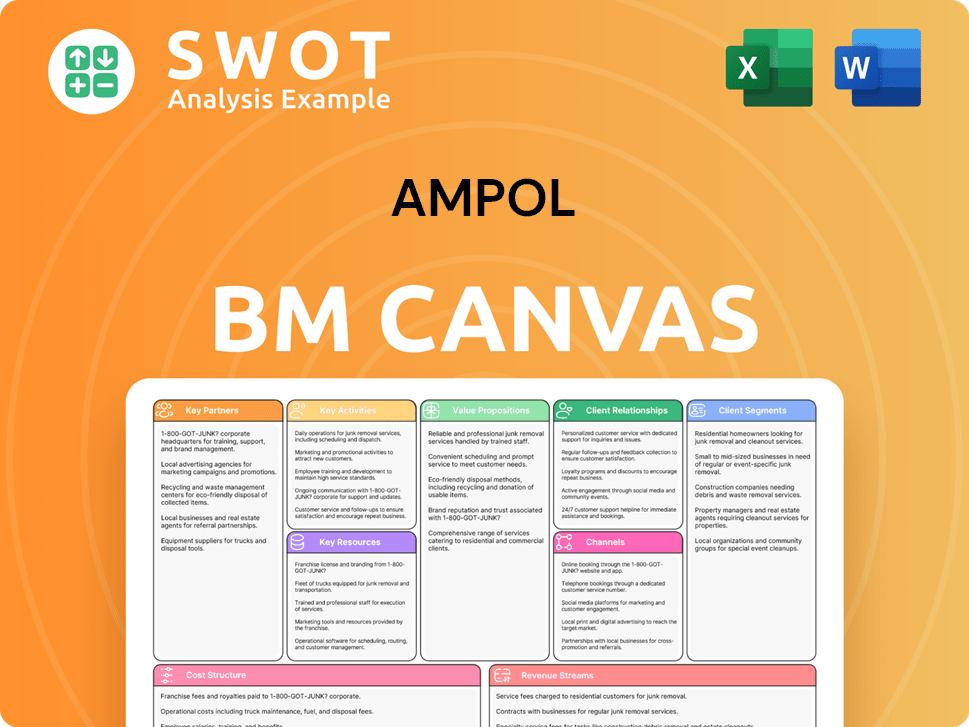
What is the Timeline of Key Events for Ampol?
The story of the Ampol company is a significant part of Australia's business history. From its Ampol origins in the 1930s to its modern focus on sustainable energy, the company has adapted to changing market demands. The following table outlines the key milestones in the Ampol timeline:
| Year | Key Event |
|---|---|
| 1936 | Australian Motorists Petrol Company (Ampol) founded. |
| 1950 | Acquisition of Neptune Oil Company. |
| 1956 | Kurnell Refinery commences operations. |
| 1995 | Ampol merges with Caltex Australia. |
| 2020 | Caltex Australia officially rebrands back to Ampol. |
| 2022 | Ampol acquires a 50% stake in New Zealand's Z Energy. |
| 2023 | Ampol announces plans for future energy solutions, including EV charging infrastructure. |
| 2024 | Ampol continues to expand its AmpCharge EV charging network across Australia. |
| 2025 | Ampol focuses on integrating its retail and commercial operations, expanding its convenience offerings, and exploring sustainable energy initiatives. |
Ampol is investing significantly in future energy solutions, especially electric vehicle (EV) charging. The company's AmpCharge network aims to have approximately 300 bays in over 100 locations by the end of 2024. This shows a strong commitment to supporting the transition to electric vehicles across Ampol Australia.
The company is focusing on expanding its retail convenience offerings and integrating its commercial fuel supply chains. This includes growing its convenience stores and streamlining its commercial fuel supply. These strategies are aimed at strengthening its market position and improving operational efficiency within the Ampol company.
Ampol is also exploring opportunities in hydrogen and biofuels. This aligns with broader industry trends toward decarbonization and sustainable practices. These initiatives reflect Ampol's commitment to adapting to the changing energy landscape. Read more about the brief history of Ampol's founding.
Analyst predictions suggest that Ampol's diversified portfolio and proactive approach to new energy solutions will be crucial for its sustained success. Leadership statements emphasize Ampol's commitment to providing essential energy solutions for Australians, adapting its founding vision to the demands of a net-zero future.
Ampol Porter's Five Forces Analysis
- Covers All 5 Competitive Forces in Detail
- Structured for Consultants, Students, and Founders
- 100% Editable in Microsoft Word & Excel
- Instant Digital Download – Use Immediately
- Compatible with Mac & PC – Fully Unlocked
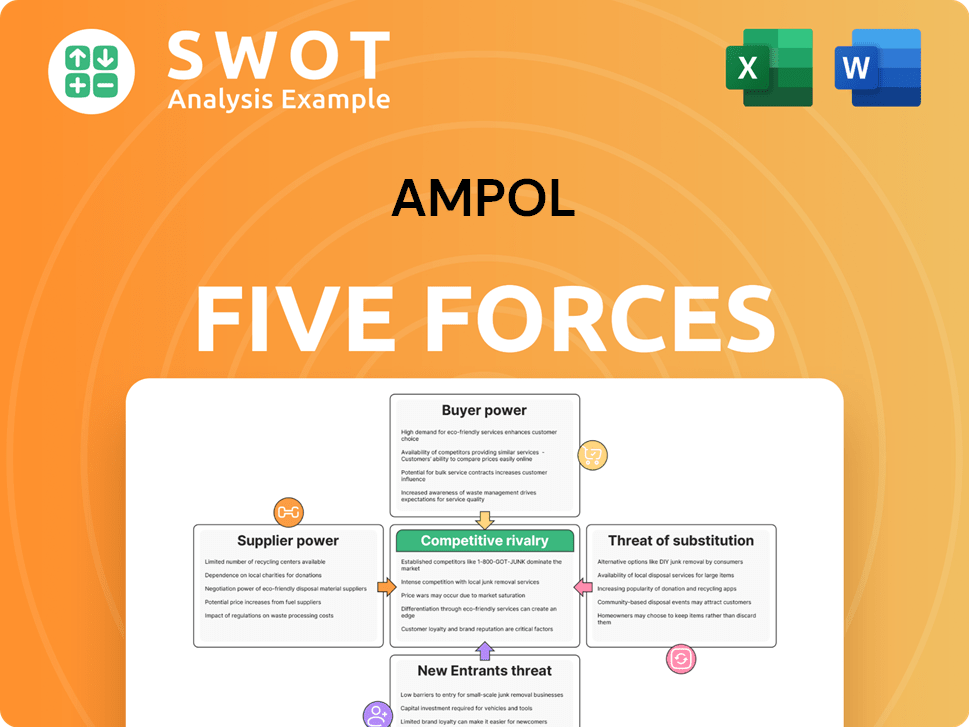
Related Blogs
- What is Competitive Landscape of Ampol Company?
- What is Growth Strategy and Future Prospects of Ampol Company?
- How Does Ampol Company Work?
- What is Sales and Marketing Strategy of Ampol Company?
- What is Brief History of Ampol Company?
- Who Owns Ampol Company?
- What is Customer Demographics and Target Market of Ampol Company?
Disclaimer
All information, articles, and product details provided on this website are for general informational and educational purposes only. We do not claim any ownership over, nor do we intend to infringe upon, any trademarks, copyrights, logos, brand names, or other intellectual property mentioned or depicted on this site. Such intellectual property remains the property of its respective owners, and any references here are made solely for identification or informational purposes, without implying any affiliation, endorsement, or partnership.
We make no representations or warranties, express or implied, regarding the accuracy, completeness, or suitability of any content or products presented. Nothing on this website should be construed as legal, tax, investment, financial, medical, or other professional advice. In addition, no part of this site—including articles or product references—constitutes a solicitation, recommendation, endorsement, advertisement, or offer to buy or sell any securities, franchises, or other financial instruments, particularly in jurisdictions where such activity would be unlawful.
All content is of a general nature and may not address the specific circumstances of any individual or entity. It is not a substitute for professional advice or services. Any actions you take based on the information provided here are strictly at your own risk. You accept full responsibility for any decisions or outcomes arising from your use of this website and agree to release us from any liability in connection with your use of, or reliance upon, the content or products found herein.